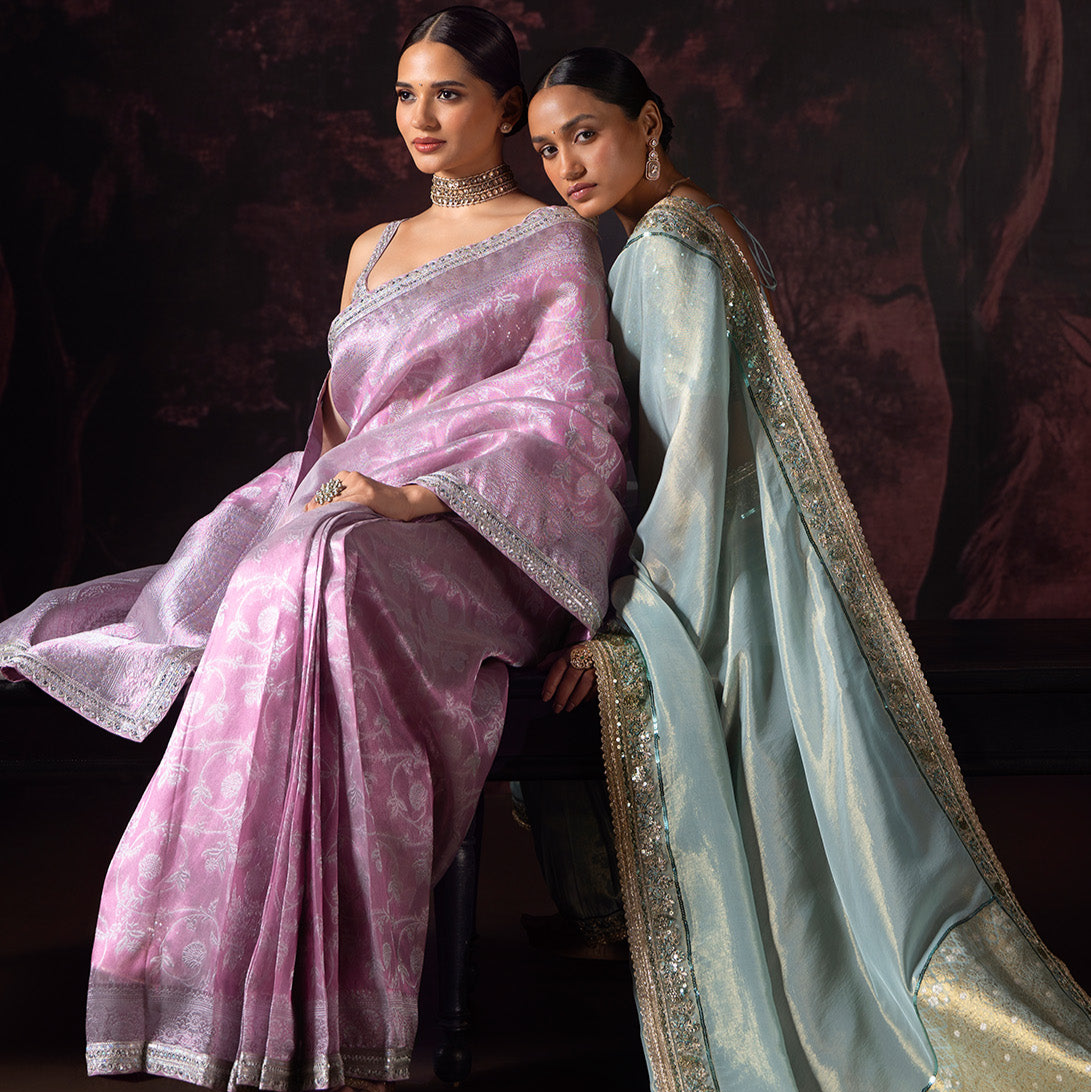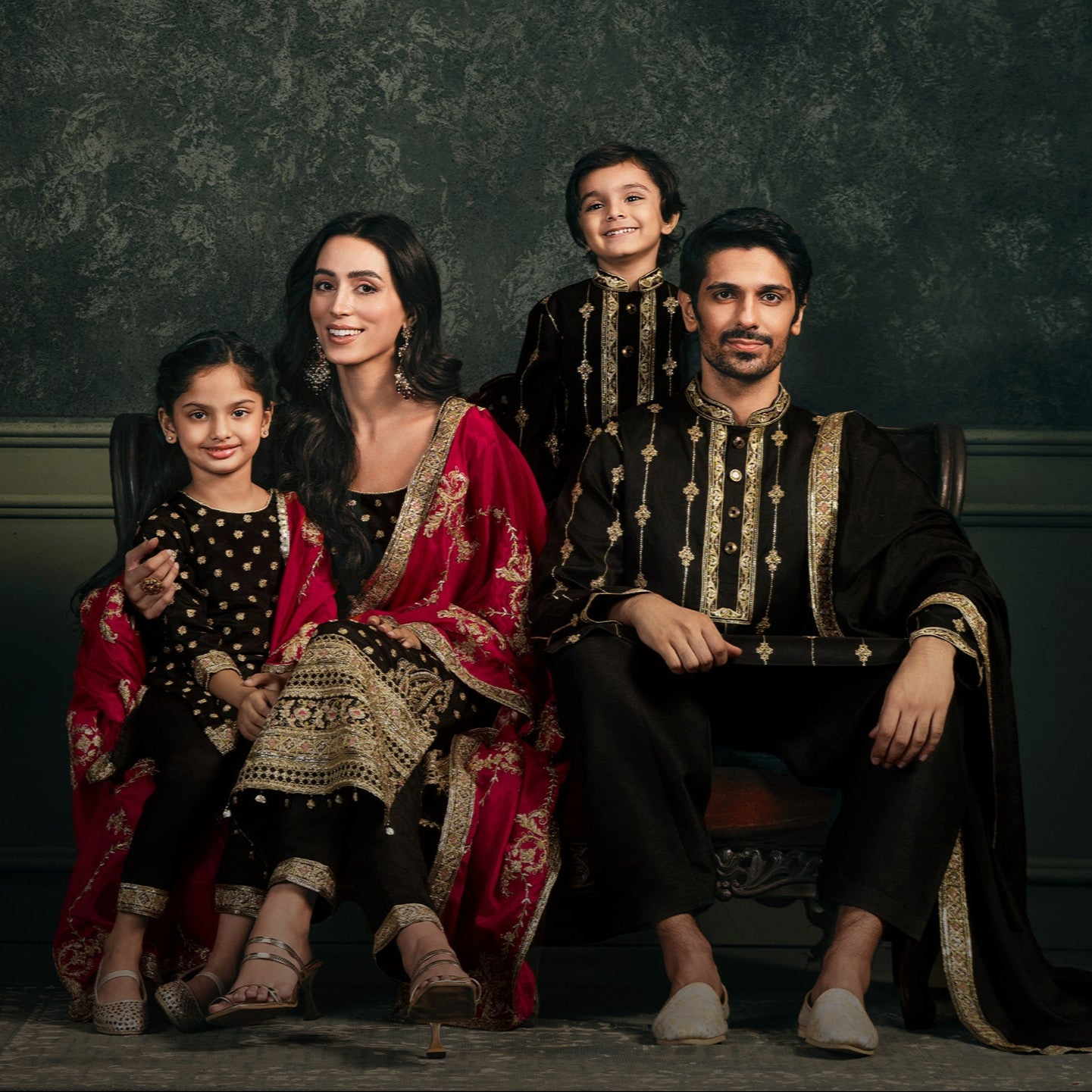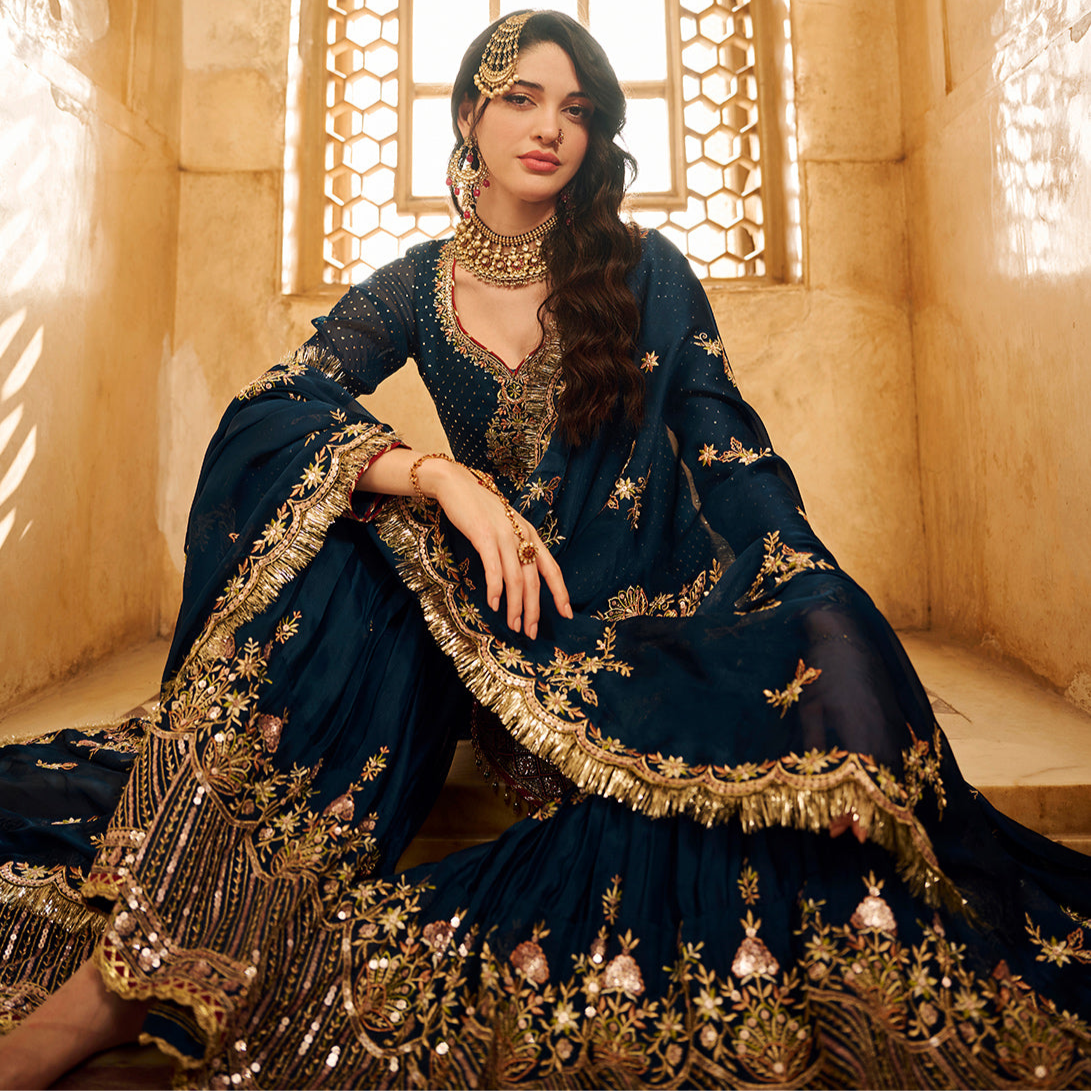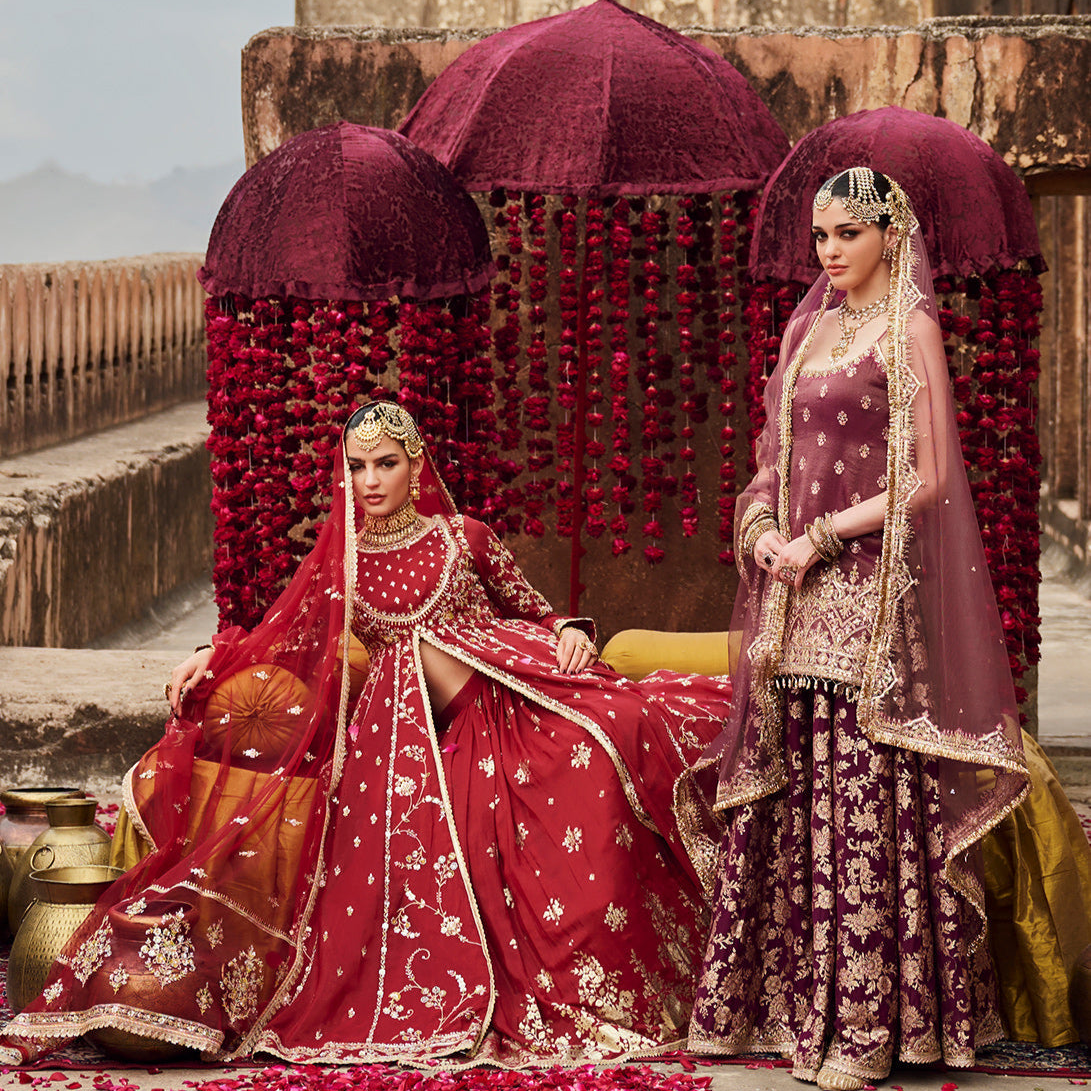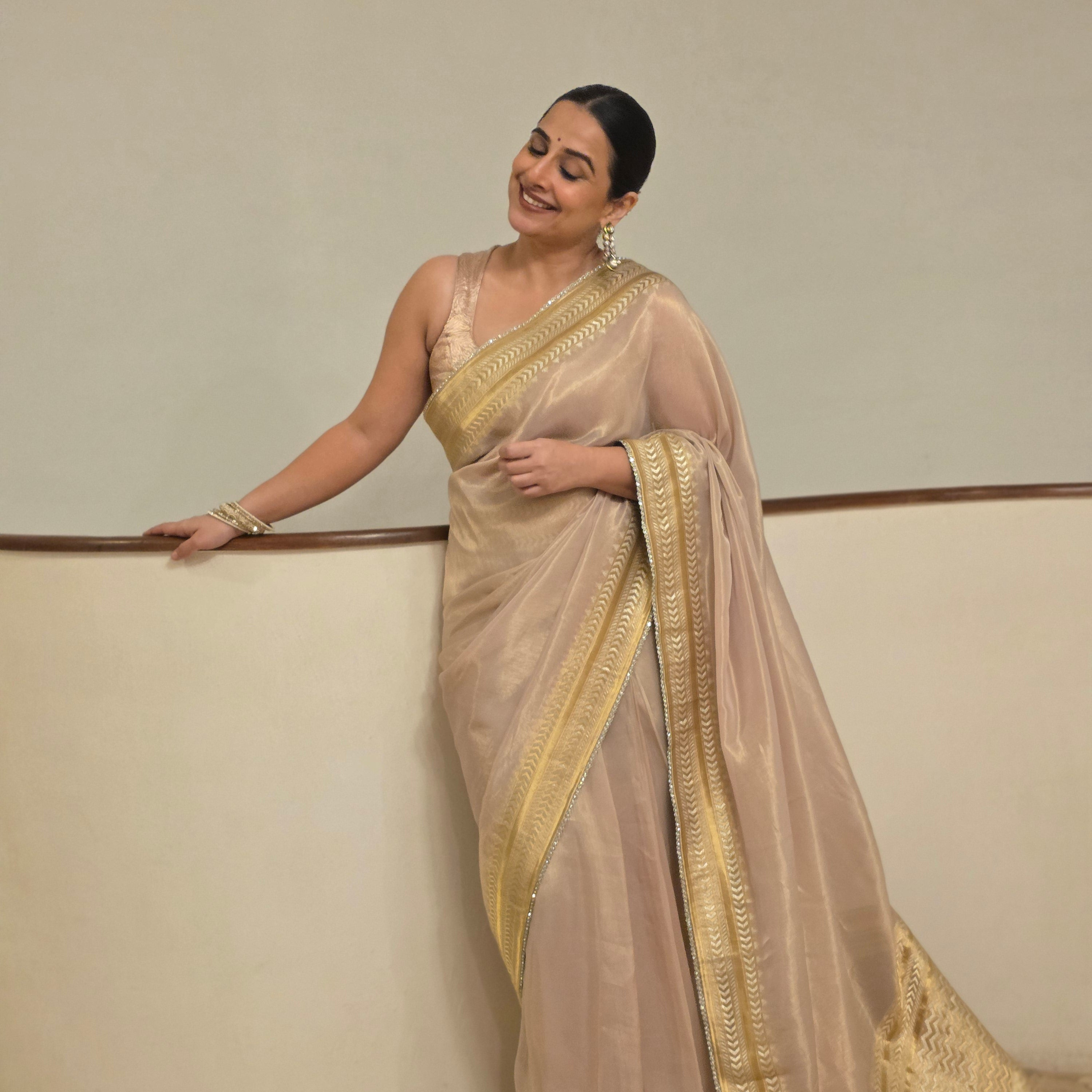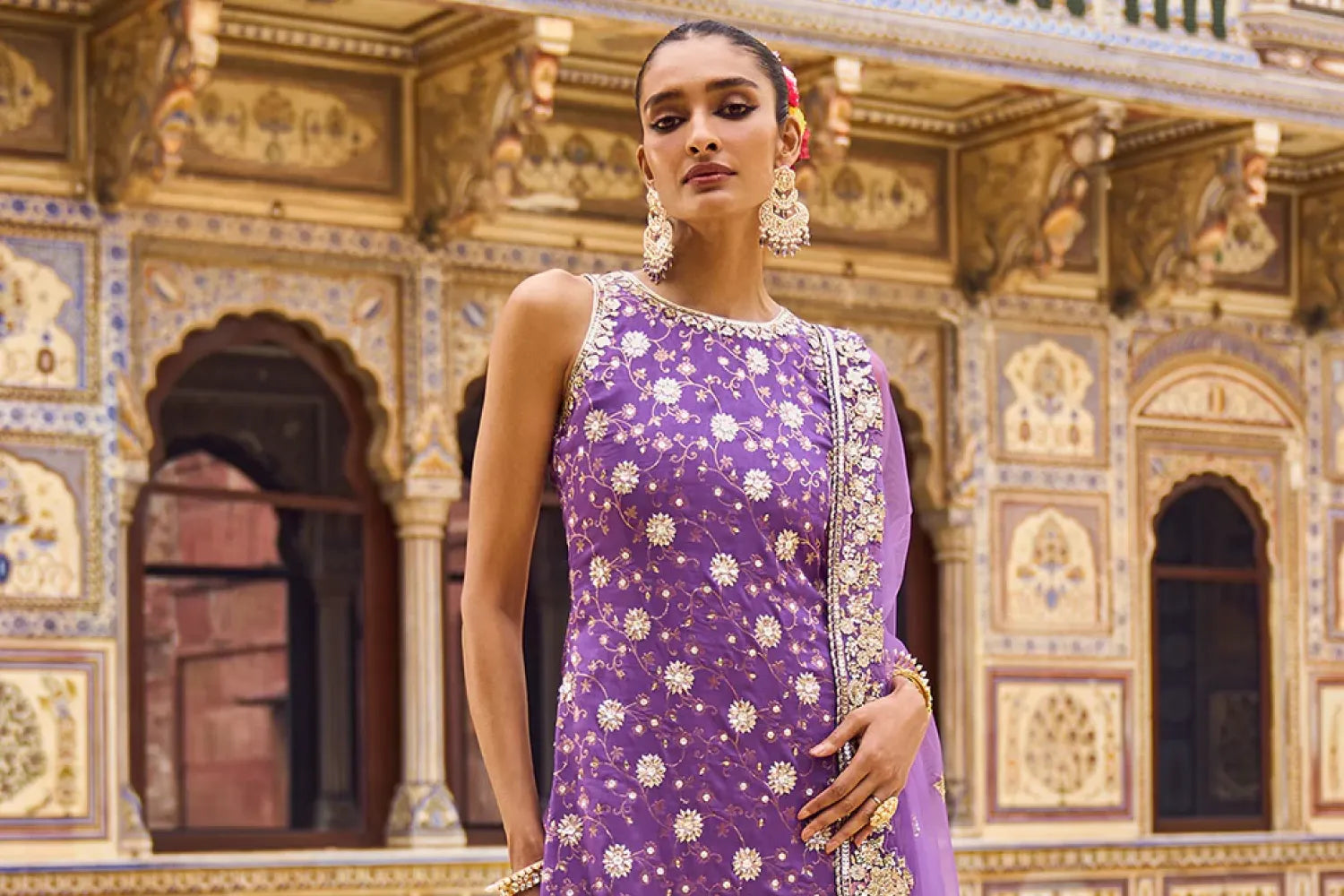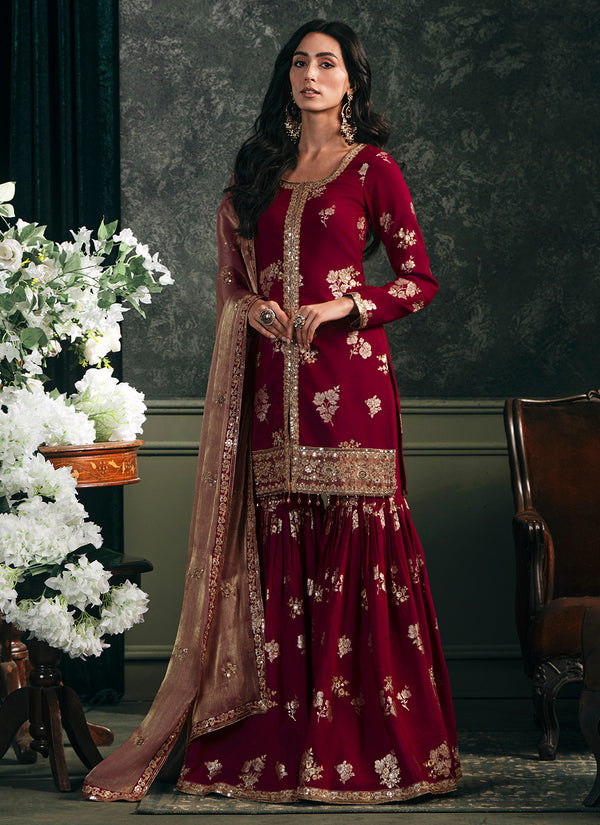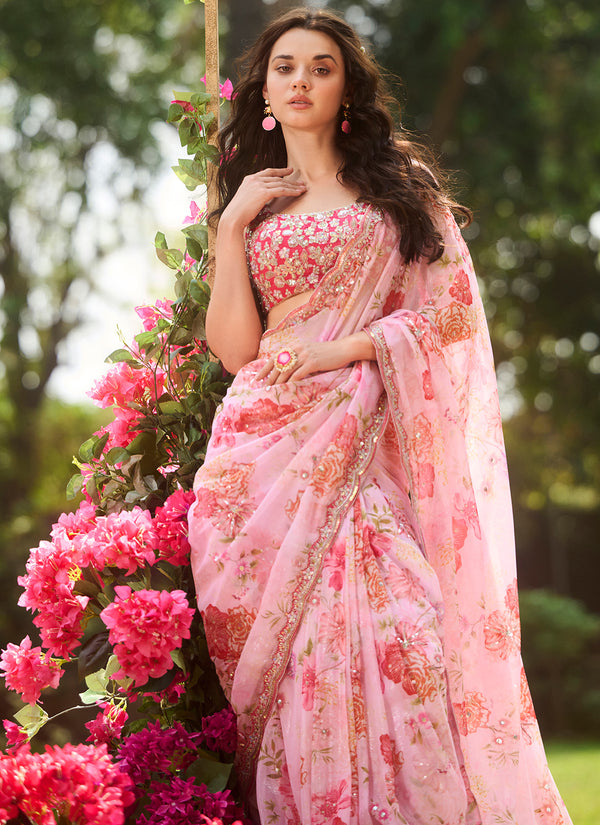
How To Drape A Saree: Step by Step for Beginners (Video & Images)
Women's sarees have been a dominant presence in ethnic wear for hundreds of years. However, the process of draping a perfect saree is an art in and of itself. It may seem easy, but in reality, there is a touch of finesse and a whole lot of artistry involved when it comes to draping it.
Wearing a saree is a long-standing custom that has been handed down from generation to generation and is worn in different styles in different states of India, each telling a tale of the rich heritage from which it came.
So if you're a newbie to the idea of draping a saree and are concerned, don't worry, because we are going to break the process into simple steps and make it really easy for you. Get your saree ready and follow these simple steps to drape it effortlessly.
What You Need On Hand Before You Begin:
Safety Pins
To prevent the saree from slipping, you'll need a few different sizes of safety pins. Always use the proper size safety pin when pleating on the pallu or in the front of your tummy - a safety pin will help to keep it in place.
Saree Pin(s)
Unlike regular safety pins, saree pins are designed to hold the front pleats in place while also adding a decorative touch. They come in a variety of designs, colors, and finishes, making them both functional and stylish. While using a saree pin is optional, it can help keep the pleats neat and secure, especially for beginners.
Pallu Style Planning
The pallu is the loose, flowing end of the saree that drapes over the shoulder and adds elegance to the outfit. Because it is a large piece of fabric, managing the pallu can feel tricky, especially for those who are not used to wearing sarees.
For beginners, the easiest and most classic option is the pleated pallu style, where the fabric is folded into neat pleats before being draped over the shoulder. This keeps the saree structured and makes it look formal and refined. Alternatively, a free-flowing pallu, left unpleated, is perfect for casual occasions or for children, as it is quicker to drape and allows more freedom of movement.
Pro tip: To keep the pallu secure and maintain a graceful appearance, pin it at the back of the shoulder and again near the hip. This ensures that it stays in place while walking, playing, or dancing without disturbing the rest of the saree.
Additionally, experimenting with the length and position of the pallu can create different looks - a slightly longer pallu draping over the arm can look more traditional, while a shorter drape is more practical for daily wear. With the right pinning and positioning, even beginners can wear a saree comfortably and confidently, making it an enjoyable experience for young girls and adults alike.
Matching Underskirt & Blouse
The underskirt is important and needs to be of the right size; wearing it loose can cause the saree to sag when you walk around. These days, fitted underskirts are available that not only give you a nice shape but can also hold the saree in position for as long as you wear it. So put on the matching blouse and skirt and get ready to drape the saree.
Footwear
Choosing the right footwear is an important step before draping a saree, as it helps determine the proper length of the fabric. Most women prefer wearing heels with sarees to enhance posture and add elegance, so it’s essential to put them on first. The height of the heels will affect how the saree falls, ensuring it doesn’t drag on the floor or appear too short.
For beginners or young girls, comfortable footwear is key. Low heels, wedges, or even embellished flats can work well, especially if the saree will be worn for long hours during celebrations or events. Putting on the shoes beforehand also helps in folding and pleating the saree accurately, so the hem sits just above the floor, preventing tripping or discomfort.
For more formal occasions, taller heels can add a graceful lift, while for casual or daily wear, flats or sandals are practical without compromising style. By deciding on the footwear first, you ensure the saree drapes beautifully, moves gracefully, and complements the overall outfit perfectly.
How to Drape A Saree Step By Step (Images)

Step 1:
With your left hand, hold the inner end of your sari. Leave the rest of the saree on the floor and look up straight in the mirror.

Step 2:
Now, ensuring the other end touches the floor tuck the end you are holding nicely in the underskirt starting from the belly button.

Step 3:
Keep tucking all around your waist until you reach back to where you started, i.e., your belly button. Now recheck the length and make sure it is equal and not too high or low.

Step 4:
Now repeat to make another round, tucking in evenly while you move slowly in a circle - keeping the length in mind, it has to be even.

Step 5:
Now, stand straight in front of the mirror again and decide the length of the pallu by roughly placing the other end of the saree on your shoulder and adjusting its length. It should be at least 90 cm in length from the shoulder to the end.

Step 6:
Once the length of the pallu has been concluded, take the remaining middle of the saree that was left after you draped two rounds on your waist and start pleating it. Pleating is the most difficult part, use your thumb and pinky finger and start wrapping the pleats around them alternatively.
With each of them, according to the span of your palm, make around 4-5 of them, and to put a measurement, around 5 inches should be the ideal size. The trick here is that 5-6 pleats spanning from your thumb to index will help give you a comfortable drape while the shorter pleats will enhance and give you a full and gathered look.
So make sure that you experiment with these and choose wisely!

Step 7:
Hold the pleats together once completed and adjust them so that the bottom edge is at floor level. Tuck them into the underskirt facing left. It is best to tuck it a little to the left at the belly button and adjust it to remain straight.
Secure the pleats with a safety pin. If you plan to leave a thin and pleated pallu, use a fancy saree pin; otherwise, don't worry, use a classic safety pin, and it will be barely visible under the pallu.

Step 8:
Now we come to the last and most interesting part of the saree draping process: adjusting the pallu. Pallu generally falls slant and over your midriff and bust. It continues to fall long over your shoulder and is left free behind. Adjust the pallu by sliding your hand along its entire length and pressing the pleats as you go. Ensure it is properly hugging your curves and is secure with a safety pin wherever needed.

The way sarees are draped varies considerably from region to region throughout India. As a result, it's fascinating to experiment with all of the draping styles that India has to offer. Trying out distinct saree draping techniques with a twist will give you more flexibility in your appearance than you've ever had before.
If you understand the fundamental saree draping procedure as outlined above, you'll be able to execute any draping technique, as all of them require tucking, pleating, and adjusting the pallu - just in different ways.
A Few More Tips To Know When Draping the Saree
The Fabric:
The type of fabric you choose can make a big difference in how your saree drapes and looks. Lightweight fabrics like cotton, chiffon, georgette, or crepe are easier to manage and pleat neatly, making them ideal for beginners and for children. They fall softly and create a flowy, elegant silhouette without much effort.
Heavier fabrics like silk, brocade, velvet, or raw silk, on the other hand, require more careful handling. They hold their shape well and give a rich, structured look, but pleating and tucking may take more practice. These fabrics are perfect for formal events, weddings, or festive occasions, where a polished and regal appearance is desired.
Sheer or delicate fabrics such as net or organza add a graceful, ethereal effect but may need extra pins or lining to prevent slipping. Draping styles can vary slightly depending on the texture, weight, and stiffness of the fabric, so experimenting with different materials can help you find the look and feel that works best for you. Choosing the right fabric ensures both comfort and style, making the saree-wearing experience smooth and enjoyable.
Pallu & Pleats
Some sarees already have the pallu length defined, in that case simply use the given length, and then the remaining fabric can be pleated. Pleats are a fantastic design concept; the same sari may be worn by any body type by altering the pleats.
Embroidery & Work on The Saree
A lot of embroidered sarees will come with a pre-defined pallu, pleats, and a boring part that must be tucked in. While the steps above are suitable for any type of saree, feel free to adapt them to your own preferences.
FAQs
1. What is the easiest saree drape for beginners?
The classic Nivi drape (originating from Andhra Pradesh) is the easiest and most popular style for beginners. It’s simple, elegant, and suits all body types. The pleats fall neatly in front, and the pallu drapes gracefully over the shoulder, making it ideal for any occasion.
2. How many pleats should I make for a saree?
Typically, 5 to 7 pleats work best for a balanced look. If your saree fabric is thick (silk or brocade), stick to 4–5 wider pleats. For lighter materials like chiffon or georgette, opt for 6–7 narrower ones for a more gathered and flowy look. The key is to keep them even and ensure they touch the floor neatly.
3. How do I keep my pallu in place?
Use safety pins or saree pins to secure the pallu at the shoulder and near the hip. For a polished look, pleat the pallu and pin it neatly over your shoulder.
4. What underskirt is best for a saree?
Traditionally, a fitted cotton or satin underskirt with a drawstring or elastic waistband works best. Usually, it should match your saree color and fit snugly around your waist without being too tight. As the modern Indian, women are opting for shapewear instead of petticoats.
Shop Lashkaraa's Women's Collection for Traditional & Designer Ethnic Wear


